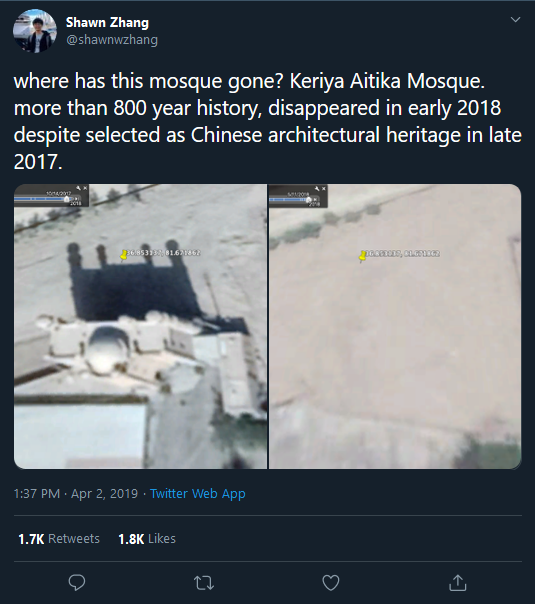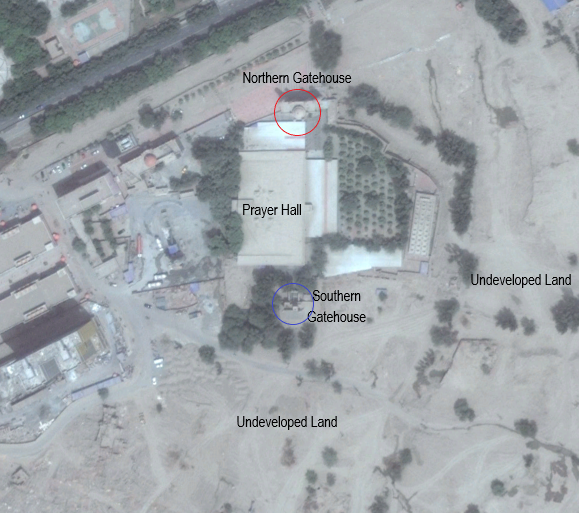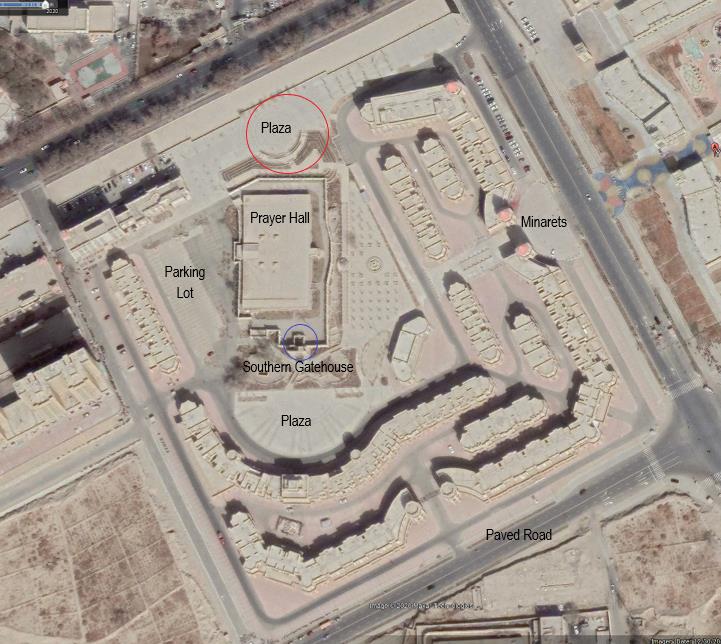Editor's note: Sun Feiyang is a Chicago-based Chinese working in an American bank holding company, spending all his college years in the United States. The article reflects the author's opinions, and not necessarily views of CGTN.
I am a Chicago-based Chinese working in an American bank holding company, spending all my college years in the United States. However, I care about my home country very much, especially when it is being smeared and slandered.
One year ago, there was a rash of articles in the media with the same claim that China had been on a massive, targeted campaign to destroy mosques in Xinjiang.
At first, Shawn Zhang posted a tweet on April 2 last year claiming that Keriya Eitika Mosque had been demolished. Weeks later, Zhang clarified that this mosque was actually a recently built gatehouse that had been removed, and the 800-year-old mosque was intact (and much larger than the image he showed).

The screenshot of Shawn Zhang's tweet.
The screenshot of Shawn Zhang's tweet.
Although the mistake has been clarified, the mosque-demolition narrative has soon taken on a life of its own as a number of mainstream media outlets began to pick up on the story, many of which even disregarded the fact that Zhang was mistaken.
After these images were used as "positive evidence" to denounce the Chinese government for religious repression, they and the Keriya Aitika Mosque story largely faded from public view. The media moved on to new sensational claims about Xinjiang, shifting gears every few weeks in search of something that would stick.
Given the lack of follow-up, I thought I would revisit the Keriya Aitika Mosque situation myself to provide an update. Readers are encouraged to follow along on Google Earth – the coordinates for the mosque are 36°51'08.75" N, 81°40'18.08"E.
Below is one of the images of Keriya Aitika from May 2017, before the northern gatehouse was removed. You may notice that there's not much surrounding the mosque itself – the land on the south and east sides is basically empty.

Google Earth image, May, 2017
Google Earth image, May, 2017
Fast forward to April 2019, when we started to see these claims being made. The northern gatehouse has been removed, and there appears to be just an empty spot where it once stood. This is the image generally used as "proof".

Google Earth image, April, 2019
Google Earth image, April, 2019
The above image looks incriminating that it raised concern if they were in the process of demolishing. Why does it look so barren in front of the mosque? But lost in focus on the northern gatehouse is everything else going on -the new construction of buildings to the south and east as well as the expansion of roads around the mosque.
When we come back to Keriya Aitika Mosque in March 2020, everything has taken shape. The area to the north is a circular plaza with steps leading to the prayer hall. The southern gatehouse overlooks a new plaza and has been connected to a wall that extends around the mosque.
The buildings to the east have sets of minarets, which certain media outlets even claimed were banned in Xinjiang. There's even a parking lot to the west of the mosque for worshipers commuting from further away.

Google Earth image, March, 2020
Google Earth image, March, 2020
Were the above image put side by side with the May 2017 image, it's unlikely that anyone would draw the conclusion that the Keriya Aitika Mosque was being targeted for demolition. The use of satellite imagery is massively misleading – renovation and construction can easily look like destruction.
It's no surprise that this narrative disappeared soon after – it would not support their story for people to go on Google Earth today and see for themselves.
I encourage readers to apply a level of skepticism to the claims some Western media make about Xinjiang. The speed at which narratives are built and then discarded, as well as their type, point to something that remains persistent: not earnest reporting of the facts, but a political purpose.
Going back to claims made a year ago leads us to conclusions radically different, even opposite, from the original reporting, as we can see with the case of the Keriya Aitika Mosque.
Sun Feiyang
The U.S.
(If you want to contribute and have specific expertise, please contact us at opinions@cgtn.com.)